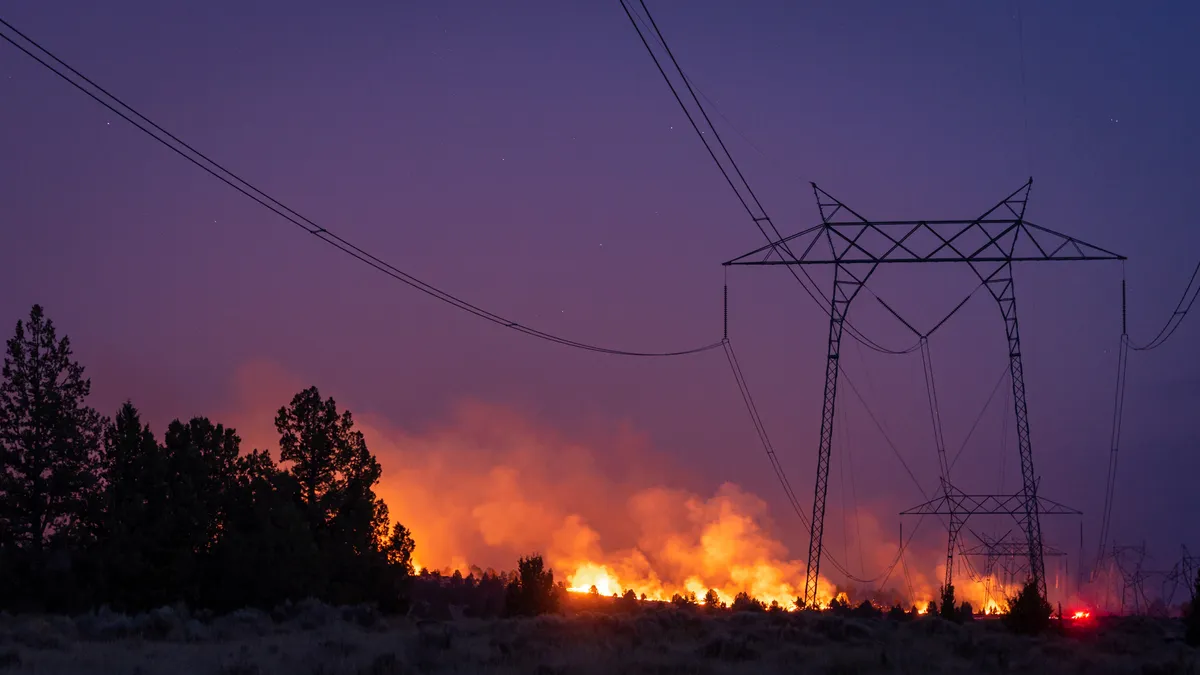Dive Brief:
- Pacific Gas & Electric is disappointed with two competing proposals under review at the California Public Utilities Commission in its general rate case proceeding, both of which are “falling short of providing the funding to accomplish the necessary safety work we have proposed on behalf of customers,” PG&E Corp CEO Patti Poppe told analysts during the company’s earnings call Thursday.
- PG&E had filed an application with the agency requesting a $15.4 billion revenue requirement for 2023. However, a proposed decision from a CPUC administrative law judge would cut that by $1.6 billion, while an alternate proposal from the assigned commissioner on the rate case would reduce it by $2.1 billion.
- PG&E is disappointed in the proposals’ “apparent willingness to trade safety and reliability for short-term considerations,” Poppe said on Thursday’s call. The agency is set to vote on the proposals at a meeting on Nov. 2.
Dive Insight:
PG&E parent company PG&E Corp. reported third-quarter income available for common shareholders of $348 million, or 16 cents per diluted share – compared to $456 million, or 21 cents per diluted share during the same quarter last year.
This September, the CPUC issued two proposals in response to PG&E’s general rate case request which cover the utility’s operational and infrastructure costs from 2023 through 2026.
California utilities file general rate case applications with state regulators every four years, during which regulators scrutinize the revenues the utility will need for that period. PG&E’s latest application sought a $15.41 billion, $16.34 billion, $16.98 billion and $17.43 billion revenue requirement for 2023, 2024, 2025 and 2026, respectively.
Regulators noted in their proposal that the utility’s application contended that the changes were needed to ensure the safety and reliability of the grid, and that its requested costs were driven up in part by inflation, as well as “a significant investment in undergrounding electric lines.”
The utility is seeking to bury 10,000 miles of power lines in its service territory, in an attempt to reduce the risk of its infrastructure sparking wildfires. However, some stakeholders maintain that installing covered conductors, or insulated power lines, is a more cost effective technique to prevent fires.
The proposed decision would authorize a revenue requirement of $13.82 billion, effective as of Jan. 1, 2023, and revenue requirements of $14.47 billion, $14.73 billion, and $14.85 billion respectively for 2024 through 2026. The alternative, meanwhile, would authorize revenue requirements of $13.31 billion, $14.02 billion, $14.32 billion, and $14.49 billion for the four-year period.
PG&E had requested authorization to bury 2,000 miles of its power lines and install 320 miles of covered conductors in parallel for this general rate case period. The proposed decision would allow the utility funding to bury 200 miles of its power lines and have it install 1,800 miles of covered conductor. In comparison, the alternative would greenlight funding for 973 miles of undergrounding, and 1,027 miles of covered conductor.
However, Poppe was critical of both proposals.
“This is critical work and in many cases, work that is required for us to execute on the safety commitments we make in our annual wildfire mitigation plans or under other regulatory orders,” she said.
PG&E believes that its plan “offers a clear pathway to keep bill growth well below the current level of inflation, at 2% to 4% annually over the rate case period,” Poppe said.
But Mark Toney, executive director of ratepayer advocacy group The Utility Reform Network, said that the administrative law judge’s proposed decision “got it right in terms of making an evidence-based decision that insulating the overhead power lines is not only faster and cheaper, but when you look at the safety benefit analysis, turns out to be as safe – if not a tiny bit more safe – than burying the lines.”
On the broader issue of balancing the safety and affordability of the electric grid, Toney stressed that utilities can’t have a blank check approach to safety.
“You need to figure out how do you get the most safety for the most cost-effectiveness — and the reason is because there’s not unlimited funding,” he said.
Correction: This story has been updated to clarify the view of some stakeholders regarding the merits of installing covered conductors, or insulated power lines, to prevent fires.















